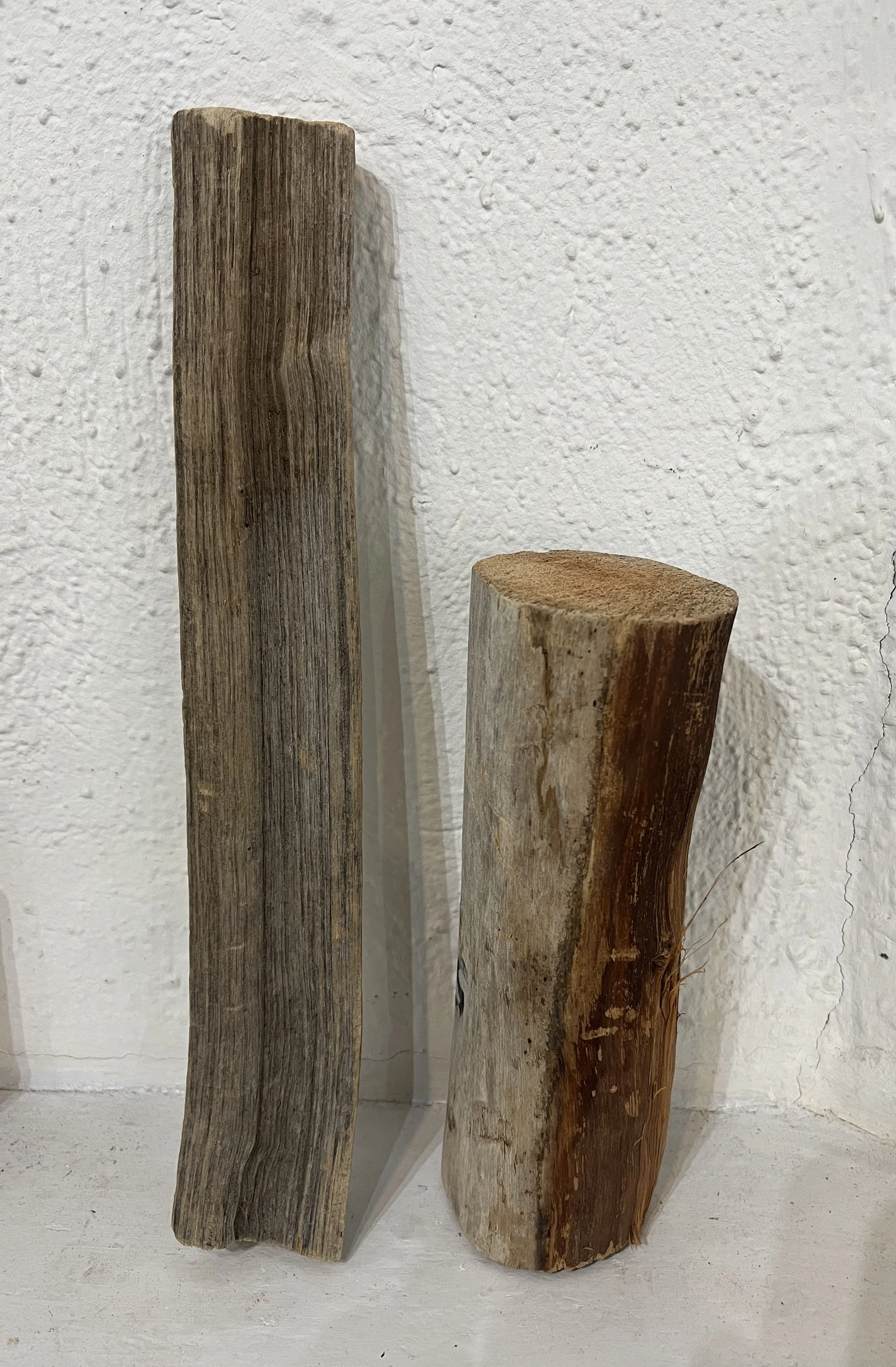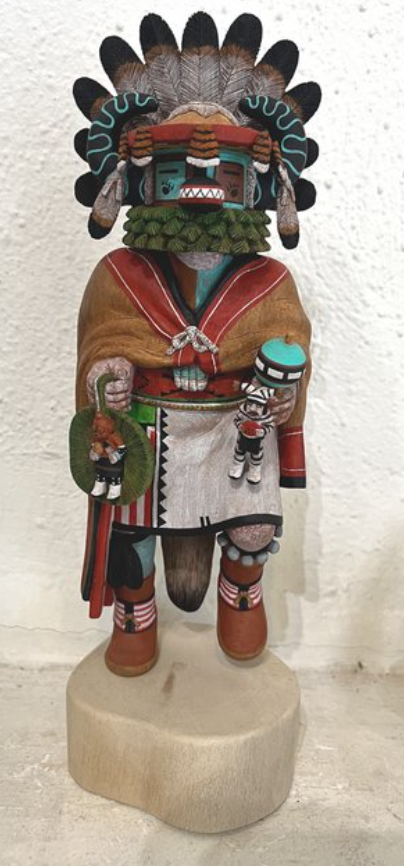Beyond indvidual styles of carving there are some broad categories that have evolved over time. While no particular style has disappeared, popularity of styles do ebb and flow. What we call “traditional” dolls today is tHe earliest style but only gained that name in the Very late 1900s when its popularity revived.
TRADITIONAL
Like all katsina carvings these are carved out of paako - the root of the cottonwood tree. They are not intricately carved but some carvers will add ‘accessories". These may include makng a small quiver, adding a tiny silver bowguard or even weaving leggings. Manuel Chavarria and Shawn Deel are among the best known for doing this but others, like Nick and Randy Brokeshoulder (father and son) will also embellish their work with this level of detail.
Traditional style also means the exclusive use of mineral paints, primarily: blue-green from copper oxide, white from a special clay, black from powdered coal (also from a liquid made by boiling sun flower shells) red from iron oxide and yellow from ochre. Colors are often mixed to achieve various shades.
Paako - the root of the cottonwood tree - is prized because the Fremont cottonwood grows only where there is a reliable source of water - a precious commodity in the arid Southwest. The water-seeking nature of the roots is what makes them the choice for katsina doll carving over the branches.
Corn katsina by Hongvi Marquez. A Kipok (Warrior) Koyemsi by Shawn Deel with handmade clothing and a cast silver point to the spear. A Kowaako Mana or Chicken Maiden made in the early 1900s followed by one made recently by Nick Brokeshoulder.
HIGHLY DETAILED CARVINGS
This style of work began to evolve around 1970 and was accelerated when Hopis were not allowed to sell katsinas that had migratory bird feathers - not even of those birds which could be legally hunted, like ducks. While some carvers worked with grouse, pheasant and pigeon feathers, others found a receptive audience for carved wooden feathers, which also were not susceptible to damage from moths and crickets. In time very highly detailed work emerged, along with the concept of 'one piece carvings' - dolls which were carved without anything being carved separately and added on. A problem with cottonwood root is that it is soft, with an open grain tha runs vertically so carving an arm out across the grain is structurally unsound. That is why many (most?) "one piece" dolls will have items carved separately and then attached - notably ears or protruding mouths.) Contrary to an oft-repeated claim, one piece carvings are not traditional or the oldest style of katsina doll.
Most carvers use exacto blades and fine files for the detail work. Only a very few use dremel or foredom drills as one small slip can instantly and irreparably damage the carving. Lastly, this style of doll is almost always painted with acrylic paint.
The late Brian Honyouti of Bacavi village on Third Mesa was the first to carve in this style but he never took any credit for being the first or even one of the first. I remember watching him carve in his mother’s house one Winter afternoon. The doll was resting on a quilt on his lap and he was carving out a lariat in the hands of a Heheya katsina…an extremely delicate task. He would take no more than three strokes with his exacto knife before setting it down and resting his hand for a minute or two. He explained that otherwise his hand would begin to tense up and he would lose a sense of how hard he was applying the blade. Further, he was on his third blade since morning - needing to change blades before they even began to show signs of even slightly dulling.
A return to the older style carving has diminished the number of carvers working in this style but some continue to carve in this style - and most of those carve both styles).
A Mosayru or Bison (Buffalo…) Dancer by the award-wining carver, Ron Honyouti. The Tasaf Mana was carved by Cecil Calnimptewa Jr. He was among the most famous and awarded carvers of the 1970s and 80s. The Haniya was carved by Andrew Sahmie Sr. In his hands are gifts that will be given out during the ceremony.










